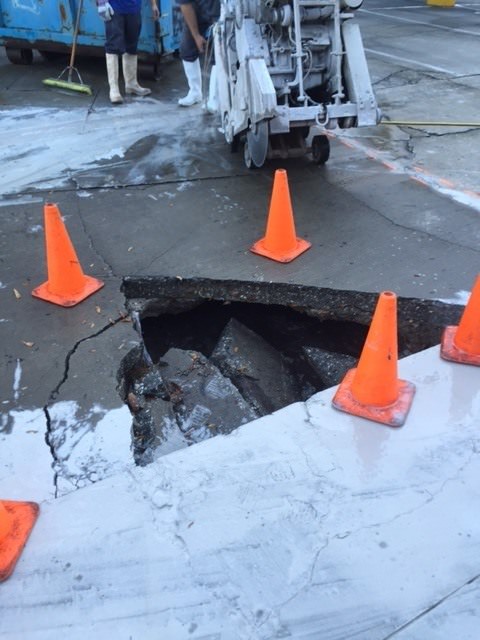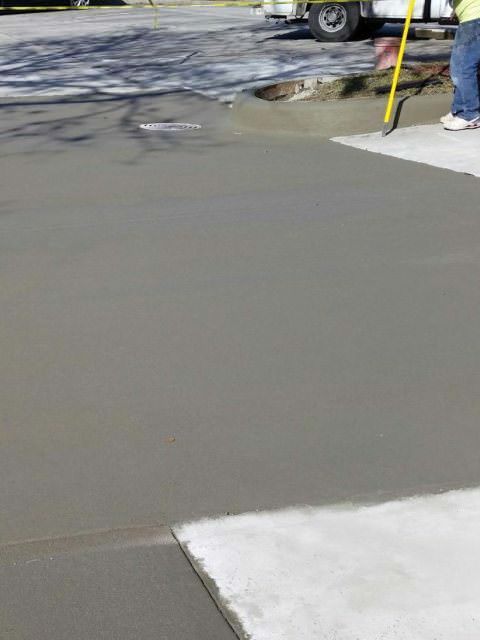Parking Lot Sinkholes – everything you need to know about Florida’s terrifying problem
Sinkholes have become an all too common sight across the Sunshine State and anyone who owns an asphalt parking lot needs to pay serious attention to this article or could face losing thousands of dollars
24,671 – that’s the number of claims for sinkhole damage that were filed in the Florida between 2006 and 2010, almost 17 each day. Quite an incredible statistic, we think you would agree.



A natural component of Florida’s breaktaking landscape, a sinkhole can be defined as a hole in the ground that has been formed through the process of erosion and the drainage of water. They can vary in size from just a couple of feet across, to huge crevasses big enough to swallow up buildings. Initially thought to be the result of completely naturally occurring events, it is now believed sinkholes can also occur thanks to the actions of humans.
We can split sinkholes up into two different types, you have those that gradually appear over the passing of time – known as a cover-subsidence sinkhole, to those that can dramatically, and often dangerously appear out of nowhere – this type of sinkhole is called a cover-collapse sinkhole. Of course, cover-collapse sinkholes seem more shocking but both types are created in virtually the same manner.
In Florida, sinkholes are just one of a number of different karst landforms, these also include caves, disappearing streams, springs, and subterranean drainage systems – everyone of which can be found in The Alligator State. The word, karst, is a term which relates to ground that is made through the erosional processes linked to the chemical weathering and dissolution of both limestone and dolomite – two of the most readily available rocks in Florida.
How do I spot a sinkhole before it’s too late?
Unfortunately, there isn’t a whole lot you can do to stop a sinkhole forming on your parking lot. Although there are a few tell-tale signs that you can keep an eye out for that should mean you stay one step ahead of the danger. Are there any trees or shrubbery that are sagging or leaning at an abnormal angle on your lot? Split asphalt or sloping ground? If there is, then you could have a sinkhole situation on your hands.
Also, always remember to be especially vigilante after incidents of heavy precipitation when supporting soils can become saturated. Equally, you need to be on the lookout after long periods of no rain because this can leave the water level at a low level which can cause cavities to form.
If you do spot anything, first thing that you need to do is report your findings to the local officials who are duty bound to fill the hole so it doesn't happen again.

Getting yourself covered
One of the most shocking aspects of the recent Florida sinkhole epidemic is that what most people don’t know is that the majority of property insurance contracts don’t cover sinkhole damage. If you don’t have the extra coverage for your business and the worst happens, you will be left with a big hole in both your parking lot, and your finances.
Sometimes your comprehensive car or truck insurance policy can cover you for sinkhole damage but as always, make sure you check. If you really cherish your business, which we are sure you do, then you might want to contemplate getting some proper sinkhole insurance.
Sinkhole insurance covers you if a sinkhole or the effects of a sinkhole, damage your business. You need to make sure that your policy is big enough to fully cover you for a total rebuild should the worst happen.
As sinkholes are so common in Florida these days, there are a whole array of companies who now offer this particular cover. Get in touch with a local, trusted firm in order to work out if you can get a sinkhole policy and how much it will set you back.
Fixing a hole
If a sinkhole does crop up on your parking lot, and it is small enough not the be impacting on your business or customers, you can attempt to fix it yourself. First thing you need to do is keep an eye on it. If the hole stays the same size, and doesn’t increase in size, then you can fill it in. Get some dry-mix concrete in there, or concrete plug at the base of the abscess in order to secure a steady foundation. Next, chuck in some smooth sand, ideally Clayey sand as this will stop any water from getting into the hole and making it bigger.
After you’ve done all this, add some more sand with topsoil in order to smoothly integrate the area in with the rest of the surroundings and landscape. Always be aware that you may need to add extra fill to the hole further down the line, but hopefully your hard work will have done the trick.
Getting the professionals in
If your sinkhole is too big for you to tackle on your own; you may need to enlist some professional assistance. We offer a number of different solutions to your parking lot sinkhole problem from Compaction Grouting to Underpinning, all the way through to Injection Pressure and Internal Slab Supports.

